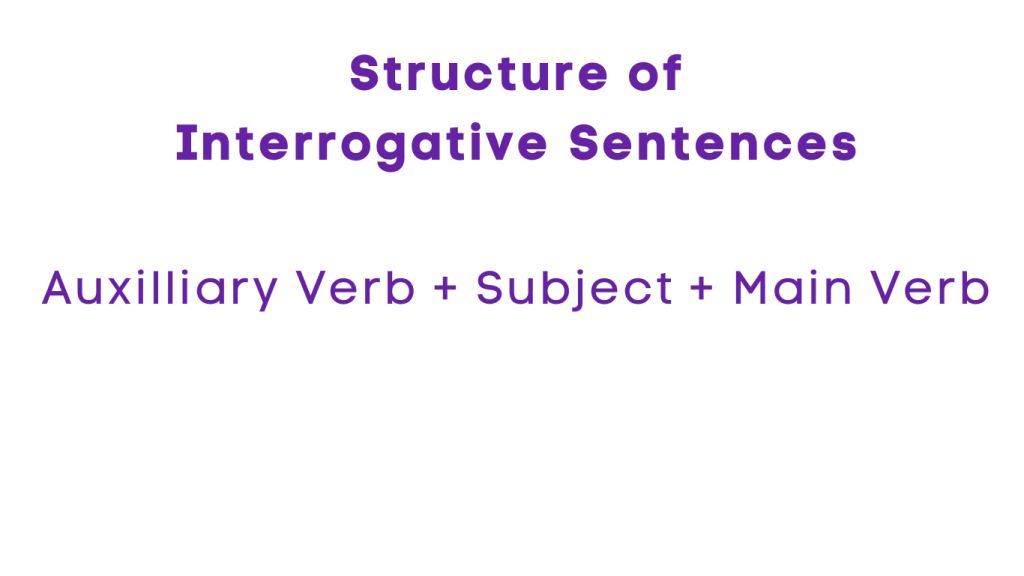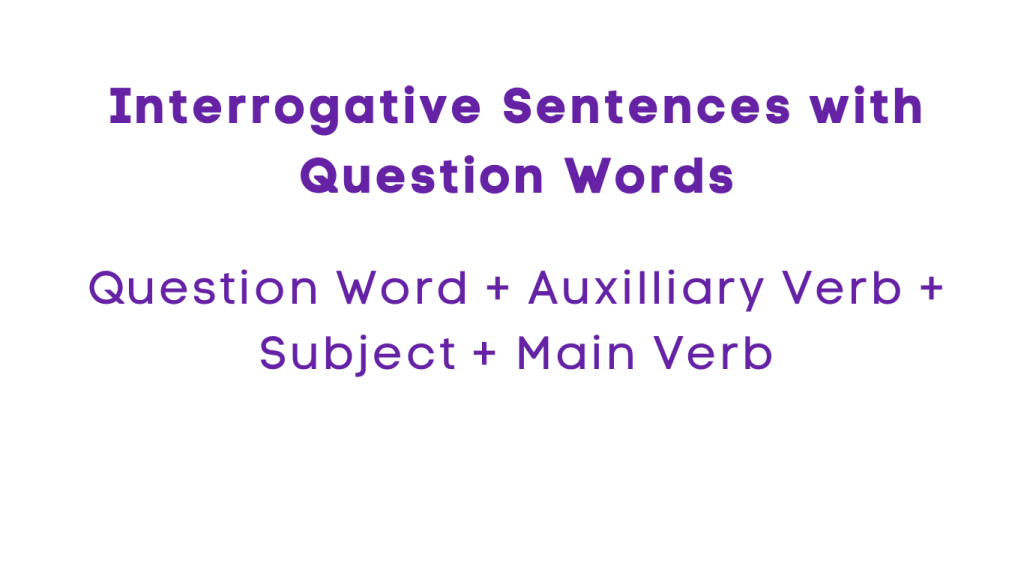What are Interrogative Sentences? – Meaning and Example
Table of Contents
Introduction
Interrogative Sentences
In the realm of grammar and language, interrogative sentences play a crucial role in communication. These sentences are used to ask questions, seek information, and engage in conversations. Let’s explore the rules, structure, and types of interrogative sentences to understand their significance in language.
Analogy of Definition
What are Interrogative Sentences?:
Interrogative sentences, also known as questions, are sentences that are used to ask for information or seek clarification. They typically end with a question mark and have a specific structure that distinguishes them from other types of sentences.
Method
Structure of Interrogative Sentences
The structure of an interrogative sentence varies based on the type of question being asked. However, in general, interrogative sentences begin with an auxiliary verb or a question word, followed by the subject and the main verb. The sentence ends with a question mark to indicate that it is a question.

Question Words
In interrogative sentences, the inquiry typically revolves around an aspect of information that remains undisclosed. This inherent ambiguity is precisely why questions are posed in the first place. To illuminate these murky areas of uncertainty, we employ question words such as “what” or “why,” commonly referred to as interrogative words or WH words.
Each question word serves as a conduit to a distinct realm of unknown information. When formulating a question, one simply substitutes the absent information with the appropriate WH word from the following roster. It’s worth noting that “how” also falls within the realm of WH words, as it effectively solicits information by encompassing both the “h” and “w” aspects of inquiry. However, the structure with question words is slightly different.

Here’s a breakdown of the various WH words and the types of information they represent:
- “who” represents individuals or people.
- “what” delves into the realm of objects or actions.
- “where” navigates the terrain of locations.
- “when” pinpoints moments in time.
- “why” delves into reasons or motivations.
- “which” explores options within a selection.
- “whose” pertains to ownership or possession.
- “how” investigates methods or manners.
- “how” followed by an adjective or adverb scrutinizes degrees or amounts.
- “how much” or “how many” focuses on numerical values or quantities.
By strategically deploying these WH words, interrogative sentences acquire specificity and depth, allowing for a more nuanced exploration of various topics and inquiries.
Types of Interrogative Sentences
Interrogative sentences can be categorized into different types based on the nature of the question being asked. The main types include yes/no questions, open questions, tag questions, and rhetorical questions.
Yes/No Question
Yes/no questions are interrogative sentences that can be answered with a simple “yes” or “no.” They typically begin with an auxiliary verb followed by the subject and the main verb. For example, “Are you coming to the party?” or “Did she finish her homework?”
Open Questions
Open questions are interrogative sentences that require a more detailed or elaborate response. They often begin with question words such as “who,” “what,” “where,” “when,” “why,” and “how.” For example, “Where did you go on vacation?” or “How did you solve the problem?”
Tag Questions
Tag questions are short questions added to the end of a statement to seek confirmation or agreement. They typically consist of an auxiliary verb and a pronoun. For example, “You’re coming to the concert, aren’t you?” or “She’s your friend, isn’t she?”
Rhetorical Questions
Rhetorical questions are interrogative sentences that are asked for effect or to make a point, rather than to elicit a response. They are often used in speeches, literature, and everyday conversations. For example, “Do you think I’m stupid?” or “Can’t you do anything right?”
Examples
Example 1: Yes/No Question
Are you ready to go?
Did you finish your homework?
Can you swim?
Example 2: Open Question
What are your thoughts on the new project?
How do you feel about the current situation?
Why did you choose that particular option?
Example 3: Tag Question
You’re coming to the party, aren’t you?
It’s a beautiful day, isn’t it?
She’s your friend, isn’t she?
Example 4: Rhetorical Question
Who doesn’t love a good cup of coffee?
Isn’t it a lovely day?
Do you think I’m going to say no to chocolate?
Quiz
Tips and Tricks
1. Use question words
Tip: Start your questions with words like “who,” “what,” “where,” “when,” “why,” and “how” to seek specific information.
2 Invert subject and verb
Tip: In English, invert the subject and verb in yes/no questions. For instance, change “You are going” to “Are you going?”
3. Avoid double negatives
Tip: Steer clear of using double negatives in questions to maintain clarity. Instead of “Isn’t it true that you don’t want any?” say “Do you want any?”
4. Crafting Clear Yes/No Questions
Tip:Keep your yes/no questions clear and straightforward to ensure a simple “yes” or “no” response.
5. Maintaining Grammatical Accuracy in Tag Questions
Tip: Ensure that the tag in tag questions matches the verb tense and polarity of the main clause for grammatical accuracy.
Real life application
Story: “The Questioning Quest of Olivia and Max”
Olivia and Max were two curious individuals who loved exploring the world and seeking knowledge. They encountered various real-life situations where interrogative sentences played a crucial role in their adventures.
Scenario 1: The Travel Inquiry
During their travels, Olivia and Max often used open questions to gather information about local attractions, customs, and traditions. By asking questions such as “Where is the best place to eat?” or “How do we get to the beach?” they were able to navigate unfamiliar territories and immerse themselves in new experiences.
Scenario 2: The Decision Dilemma
When faced with important decisions, Olivia and Max relied on yes/no questions to weigh their options and make choices. Questions like “Should we take the job offer?” or “Is this the right time to buy a house?” helped them evaluate their priorities and make informed decisions about their future.
Scenario 3: The Social Interaction
In social settings, Olivia and Max used tag questions to engage in conversations and seek validation. By adding tag questions such as “It’s a beautiful day, isn’t it?” or “You enjoyed the movie, didn’t you?” to their statements, they encouraged others to share their opinions and perspectives, fostering meaningful interactions.
Scenario 4: The Philosophical Inquiry
During their philosophical discussions, Olivia and Max often posed rhetorical questions to provoke thought and reflection. Questions like “Can we ever truly know ourselves?” or “What is the meaning of life?” sparked deep conversations and contemplation about the mysteries of existence.
Scenario 5: The Investigative Quest
In their quest for knowledge, Olivia and Max used a combination of open questions, yes/no questions, tag questions, and rhetorical questions to explore diverse subjects, uncover truths, and expand their understanding of the world. Their inquisitive nature and adept use of interrogative sentences enriched their intellectual pursuits and broadened their horizons.
FAQ's
Like? Share it with your friends
